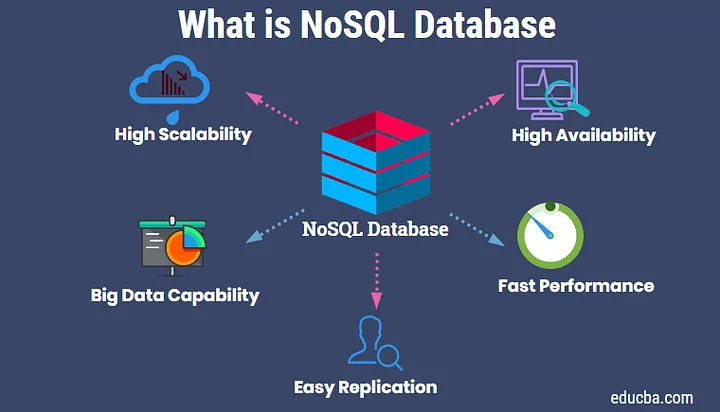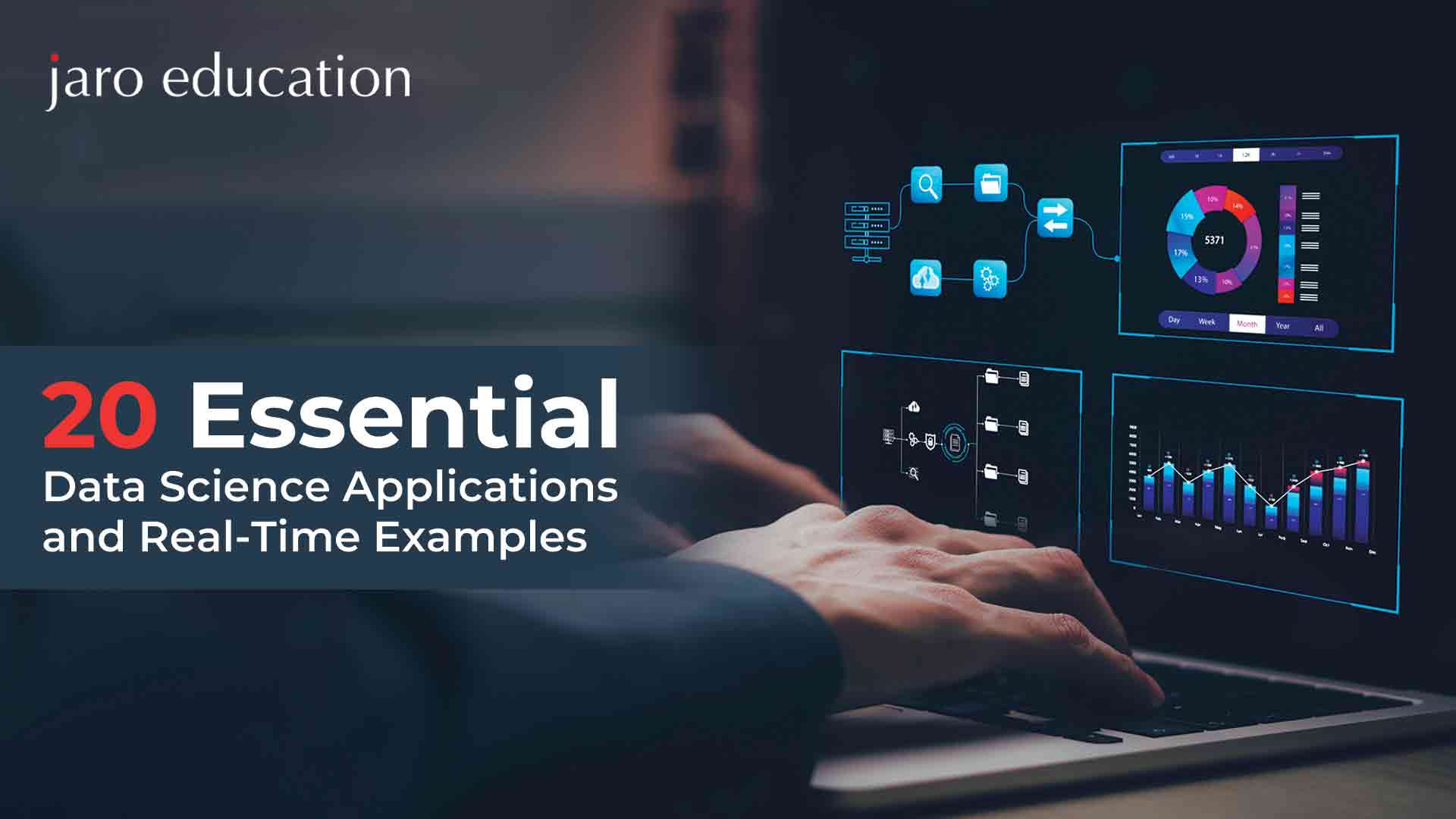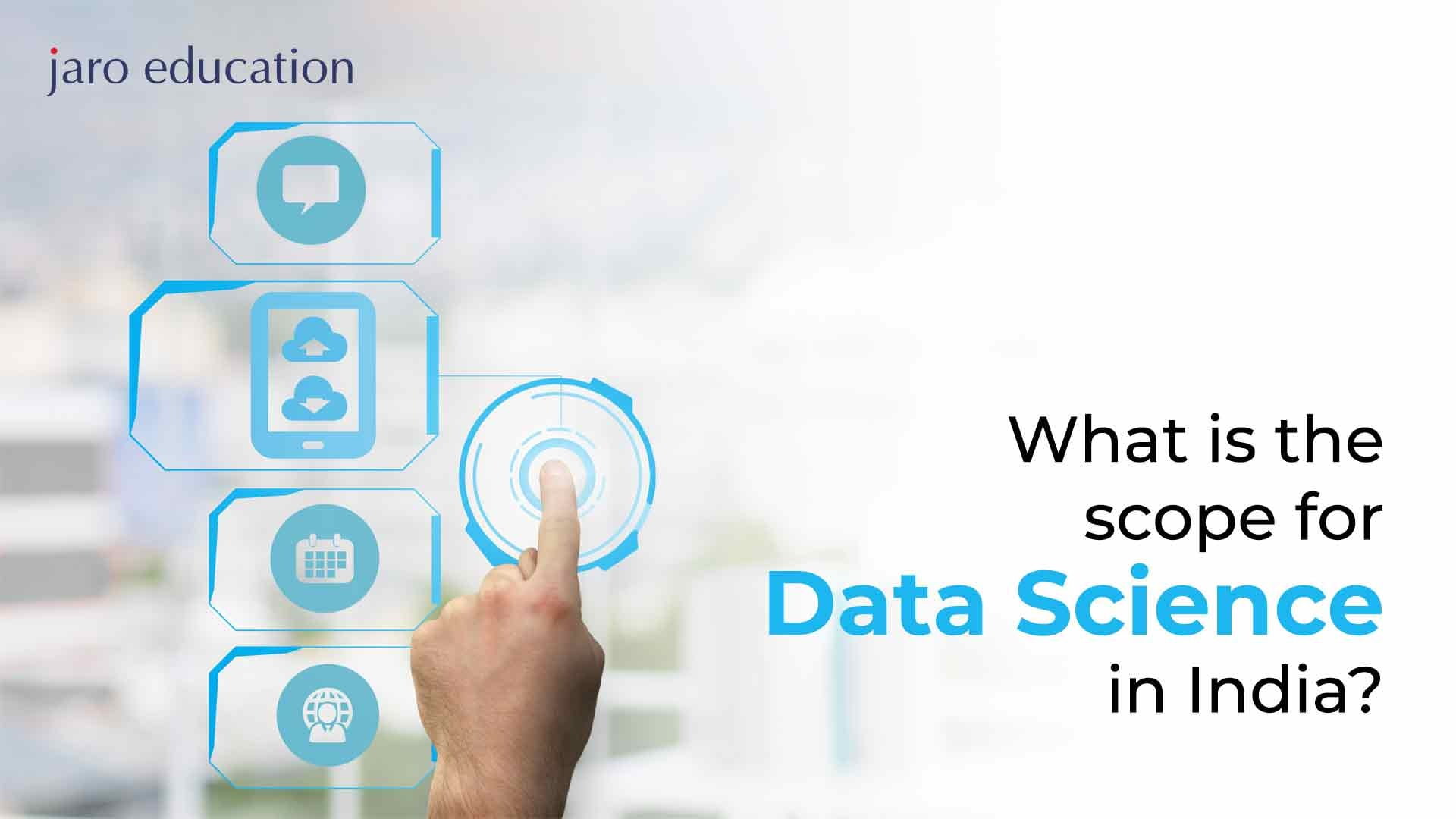What Is NoSQL? NoSQL Databases Explained
Table of Contents

- jaro education
- 4, April 2024
- 10:00 am
In today’s data management landscape, NoSQL databases are a fresh and dynamic alternative to traditional relational databases. “NoSQL” means “not only SQL,” highlighting how these databases offer diverse ways to store and organize data. Unlike tables in relational databases, NoSQL databases use different data models like documents, key-value pairs, wide columns, and graphs. This variety gives them the flexibility, scalability, and efficiency to handle large amounts of data effectively.
NoSQL databases come in different types, each serving specific purposes and data structures. They allow organizations to customize their database solutions to meet their unique needs instead of sticking to rigid schemas. This flexibility means they can adapt smoothly as data structures and business requirements change over time. In this guide, we’ll explore the Benefits and Disadvantages of NoSQL databases, including their core principles, use cases and practical uses.
What is NoSQL?
NoSQL databases are a special kind of database system made to handle lots of unstructured and semi-structured data well. Unlike regular relational databases with fixed table structures, NoSQL databases use flexible models that can adjust to changes in data. They’re also built to grow horizontally, which means they can handle more and more data as needed.
Originally, “NoSQL” stood for “non-SQL” or “non-relational” databases. But now, it’s grown to mean “not only SQL.” This change shows how NoSQL databases have expanded to include all sorts of different ways of organizing data, not just the traditional SQL methods.
NoSQL databases find extensive use in applications requiring real-time processing and analysis of large data volumes, such as social media analytics, e-commerce, and gaming. They also serve in other areas like content and document management systems, as well as customer relationship management.
However, it’s essential to note that NoSQL databases may not suit all applications due to potential limitations in data consistency and transactional guarantees compared to traditional relational databases. Hence, careful assessment of the application’s requirements is crucial in selecting the appropriate database management system.

*medium.com
Key Characteristics of NoSQL Databases
- Flexible Schema: NoSQL databases offer a dynamic schema, allowing for easy adaptation to changing data structures without necessitating migrations or schema modifications.
- Horizontal Scalability: NoSQL databases excel in scaling out by incorporating additional nodes into a database cluster. This feature makes them adept at managing substantial data volumes and accommodating high traffic levels.
- Document-Oriented: Certain NoSQL databases, such as MongoDB, employ a document-based data model. Data is stored in a semi-structured format like JSON or BSON.
- Key-Value Storage: Other NoSQL databases, like Redis, utilize a key-value data model, storing data as collections of key-value pairs.
- Columnar Organization: Some NoSQL databases, including Cassandra, follow a column-based data model, organizing data into columns rather than rows.
- Distributed Architecture and High Availability: NoSQL databases are typically designed for high availability, automatically handling node failures and ensuring data replication across multiple nodes within a database cluster.
- Flexibility: Developers can leverage NoSQL databases to store and retrieve data in a versatile and dynamic manner, supporting various data types and evolving data structures.
- Performance Optimization: NoSQL databases prioritize high performance, capable of managing large volumes of reads and writes efficiently. Consequently, they are well-suited for big data analytics and real-time applications.
Benefits of NoSQL
- Scalability: NoSQL databases utilize sharding for horizontal scaling, where data is partitioned and distributed across multiple machines while maintaining data order. Unlike vertical scaling, which involves adding resources to existing machines, horizontal scaling, exemplified by MongoDB and Cassandra, is easier to implement and allows for efficient handling of increasing data volumes.
- Flexibility: NoSQL databases excel in handling unstructured or semi-structured data, adapting seamlessly to dynamic changes in data models. This adaptability makes them well-suited for applications with evolving data requirements.
- High Availability: NoSQL databases ensure high availability through automatic replication, wherein data replicates itself to maintain consistency in case of failure, thus enhancing reliability.
- Performance: Designed to handle large data volumes and high traffic, NoSQL databases offer superior performance compared to traditional relational databases, ensuring efficient data processing.
- Cost-effectiveness: NoSQL databases often prove more cost-effective than traditional relational databases due to their simpler architecture and reduced hardware and software requirements.
- Agility: NoSQL databases are conducive to agile development practices, facilitating rapid adaptation and iteration in software development processes.
Learning NoSQL is crucial to stay updated with the rapidly growing technology landscape. The Online Master of Science in Data Science Programme, offered by Symbiosis School for Online and Digital Learning (SSODL), is an excellent choice that meets global standards. This course is entirely online and features a modern curriculum taught by top-tier faculty and industry professionals. Its goal is to enhance the skills of both current and aspiring data scientists through practical case studies, hands-on projects, and more.
Types of NoSQL Databases
NoSQL offers various ways to structure data, making it suitable for tasks like data analytics, big data management, social networks, and mobile app development. A NoSQL database organizes information using one of these main data models:
1. Key-value Store: Think of it as a dictionary where each entry has a key and a value. For instance, the key might be like an ID for a shopping cart, while the value could be the list of items in the cart. It’s handy for storing things like user sessions or caching, but not great for pulling lots of records at once. Examples include Redis and Memcached.
Popular Examples:
- Redis: A fast, in-memory key-value store often used for caching and real-time analytics.
- Amazon DynamoDB: A managed NoSQL database service by AWS.
- Apache Cassandra: Designed for scalability and high availability.
2. Document Store: Here, data is stored as documents, often in formats like JSON or XML. This is useful for handling semi-structured data, giving developers flexibility as schemas don’t have to match perfectly. However, it can get messy for complex transactions. MongoDB is a popular example, great for things like content management systems and user profiles.
Popular Examples:
- MongoDB: A widely used document database that stores data in BSON (Binary JSON) format.
- CouchDB: An open-source JSON document-based database with JavaScript as its query language.
- Elasticsearch: Combines document storage with full-text search capabilities
3. Wide-column Store: These databases organize information into columns, allowing users to access specific columns without dealing with irrelevant data. While it’s more advanced than key-value or document stores, it’s also more complex to manage. Apache HBase and Apache Cassandra are examples. HBase is built on Hadoop, commonly used in big data apps, while Cassandra is great for managing large data across multiple servers, used in social networks and real-time analytics.
Popular example:
- Apache HBase: A distributed, scalable wide-column store.
- ScyllaDB: Built on Apache Cassandra, optimized for performance and low latency.
4. Graph Store: A graph store is a database that mainly contains data structured in a knowledge graph format. In simpler terms, it stores information as nodes (representing objects, places, or people), edges (defining relationships between nodes), and properties. For instance, a node could represent a client such as IBM, another node could represent an agency like Ogilvy, and an edge would specify the relationship between them, like a customer relationship.
Popular examples:
- Neo4j: A graph database with a powerful query language for traversing relationships.
- Amazon Neptune: A managed graph database service by AWS.
These databases are handy for managing interconnected data elements within the graph. Neo4j is a popular example, based on Java, offering both a community edition and licensed versions with additional features like online backup and high availability extensions.
In-Memory Store: In contrast, an in-memory store database like IBM solidDB holds data primarily in the computer’s main memory instead of on disk is called In-Memory store. This setup ensures quicker data access compared to traditional disk-based databases.
Use Cases of NoSQL Database
Choosing the right type of NoSQL database depends on how your organization intends to use it. Let’s break down some specific uses for different types of NoSQL databases:
- Managing Data Relationships: When dealing with complex data relationships, like those in recommendation engines, knowledge graphs, fraud detection, and social networks, a graph-based NoSQL database is typically used. These databases excel at connecting various data points efficiently.
- Low-Latency Performance: For applications requiring high throughput and real-time data management, such as gaming, home fitness apps, and ad technology, a NoSQL database with low-latency performance is essential. These databases ensure quick responses, crucial for tasks like market bidding updates and delivering relevant ads. Web applications often utilize in-memory NoSQL databases to swiftly handle usage spikes without delays from disk storage.
- Scaling and Handling Large Data Volumes: E-commerce platforms must handle massive spikes in usage, especially during events like one-day sales or holiday shopping seasons. Key-value databases are commonly employed here due to their simple structure, which allows easy scaling during high-traffic periods. This flexibility is also beneficial for gaming, ad tech, and Internet of Things (IoT) applications.
Understanding the Difference: NoSQL vs. SQL Databases
In the past, the go-to for storing data in applications was the relational data model, which organizes data into tables with rows and columns. This system used SQL to manage these tables. In SQL databases, data is structured into tables, where each row holds related information about an object or entity, and each column represents a specific attribute of that data.
However, around the mid to late 2000s, alternative data models started gaining popularity. To distinguish these from traditional SQL databases, the term ‘NoSQL’ emerged. NoSQL, short for ‘not only SQL’ or ‘non-SQL’, is often used interchangeably with ‘non-relational’. Here’s a simplified comparison between relational and non-relational databases:
| Aspect | SQL Databases | NoSQL Databases |
|---|---|---|
| Data Storage Model | Organized into tables with fixed rows and columns | Utilizes various models such as Document (JSON), Key-value pairs, Wide-column tables, and Graph nodes and edges |
| Development History | Originated in the 1970s focusing on minimizing data duplication | Emerged in the late 2000s, prioritizing scalability and flexibility to accommodate rapid application changes driven by agile and DevOps practices |
| Examples | Oracle, MySQL, Microsoft SQL Server, PostgreSQL | MongoDB, CouchDB (Document); Redis, DynamoDB (Key-value); Cassandra, HBase (Wide-column); Neo4j, Amazon Neptune (Graph) |
| Primary Purpose | Primarily used for general-purpose data storage and retrieval | Varied purposes including general storage, large data with simple lookups, predictable query patterns, and analyzing interconnected data in graphs |
| Schemas | Follows rigid schema definitions | Adopts flexible schemas allowing dynamic data structures |
| Scaling | Vertical scaling, i.e., scaling up with more powerful hardware | Horizontal scaling, i.e., distributing the workload across multiple servers |
| Multi-Record ACID Transactions | Supported in some databases like MongoDB, while not in others | Generally not supported, though some databases offer limited support |
| Joins | Often requires complex join operations | Typically avoids joins, relying on denormalization and data duplication |
| Data to Object Mapping | Requires Object-Relational Mapping (ORM) tools | Often eliminates the need for ORM, with data mapping directly to programming language structures |
How Does NoSQL Work and Why is it Faster Than Relational Databases?
Unlike relational databases, NoSQL operates quicker because it doesn’t need to sift through multiple tables for answers. Instead of the traditional rows and columns setup, NoSQL arranges data in a tabular format, often using JSON documents.
For instance, let’s consider a major retail chain. Instead of accessing various tables for shoe size, brand, and color, all details about the shoes are stored in a single document. This document can easily incorporate new parameters like shoe width or material as needed.
NoSQL databases excel in handling large, intricate datasets or situations where data structures are frequently changing to adapt to new business needs.
When to Use NoSQL Over SQL?
NoSQL databases are popular for several reasons:
- They speed up development compared to SQL databases. With NoSQL, developers can control data structure, aligning well with Agile practices. This agility avoids the delays of requesting database changes and reloading data.
- NoSQL databases handle diverse data structures efficiently. They’re adept at managing structured, semi-structured, and unstructured data in one place, mirroring application objects.
- They’re cost-effective for large data volumes. NoSQL databases are designed for big data, eliminating the need for additional engineering found in SQL databases for web-scale applications.
- NoSQL’s scale-out approach is cheaper and more efficient for handling high traffic and ensuring zero downtime compared to SQL’s scale-up approach.
- They support new application paradigms seamlessly. NoSQL’s scalability enables serving both transactional and analytical workloads within one database, unlike SQL databases which often require separate data warehouses for analytics. Plus, NoSQL databases are well-suited to cloud automation and deploying databases at scale, particularly for microservices architectures.
When to Avoid Using a NoSQL Database?
NoSQL databases are designed for applications that require simplified data structures with fewer tables or containers. They work best for systems where data relationships are represented through embedded records or documents rather than traditional references. If your application heavily relies on highly normalized data, like in finance, accounting, or enterprise resource planning, NoSQL may not be the ideal choice. These systems typically need the strict structure and data integrity provided by relational databases to avoid anomalies and duplication.
Another factor to consider is query complexity. While NoSQL databases excel with simple queries against a single table, they struggle with more complex queries. Relational databases are better suited for handling intricate joins, sub-queries, and nested queries in a WHERE clause.
However, it’s worth noting that there’s not always a clear-cut decision between relational and nonrelational databases. Many companies opt for a hybrid approach, using databases that offer a mix of both models. This hybrid model provides the flexibility to handle different data types while maintaining read and write consistency without sacrificing performance.
Disadvantages of NoSQL Databases
Using a NoSQL database comes with some drawbacks as well, including:
- Each NoSQL database has its unique way of querying and managing data, unlike SQL, which is universally understood across relational and SQL database systems.
- NoSQL databases lack a strict database schema and constraints, which means they don’t have the same data integrity safeguards found in relational and SQL database systems.
- Developers must create some form of structure for the schema to utilize the data in NoSQL databases, whereas in SQL databases, this is typically handled by the database administrator.
- Most NoSQL databases employ the eventual consistency model, leading to lower levels of data consistency compared to SQL databases. This inconsistency makes them unsuitable for transactions requiring immediate integrity, like banking or ATM transactions.
Conclusion
NoSQL databases have emerged as a critical technology in the era of the Digital Economy. As organizations leverage cloud computing, mobile applications, social media, and big data, the need for flexible and high-performance databases has become paramount. NoSQL databases offer the agility and scalability required to develop and operate web, mobile, and IoT applications at any scale.
The widespread use of NoSQL by large enterprises, small businesses, and startups shows its importance in modern app development. What often starts as a small test or idea quickly becomes a key part of vital systems. NoSQL helps organizations meet the performance needs of digital businesses while staying adaptable and innovative.









